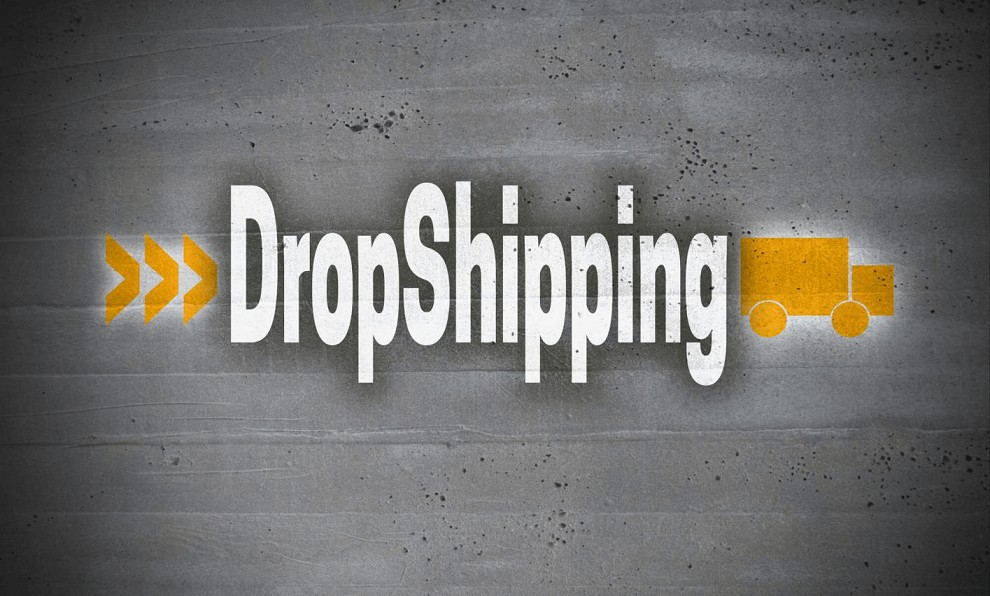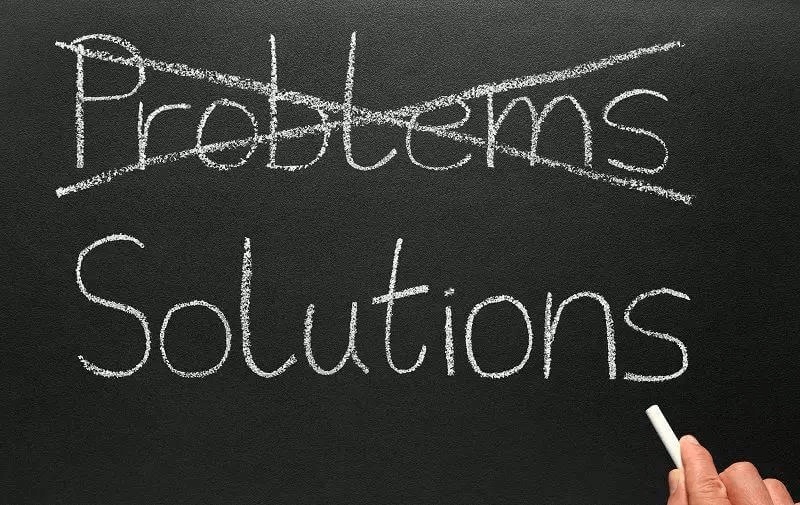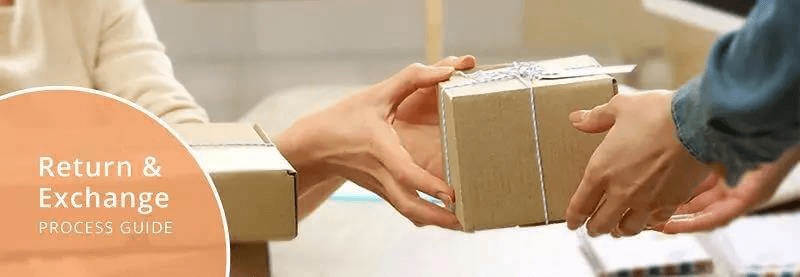As a dropshipping agent,the product is sent directly from the supplier to the customer. What should I do if there is a return or exchange?

Generally speaking, customers will not return or exchange goods for no reason, because returns and exchanges are also more troublesome for the customers themselves. There must be some dissatisfaction with the customer, and he has to return and exchange the goods despite the trouble. If you handle it properly, you might be able to make customers a loyal customer of your store.
For the return and exchange process, you should pay attention to two points: how to plan ahead; how to deal with the return and exchange.
Formulate a return and exchange policy in advance
The purpose of formulating a return and exchange policy in advance is to prevent it from happening! Before you start dropshipping, you should have a thorough understanding of the supplier's return and exchange policy. If your dropshipping business has already started, you need to see if there is any change in the supplier’s policy, and update your store’s return and exchange policy accordingly.
The first step: understand the supplier's return policy
When working with suppliers, you must be familiar with their return and exchange policies, because each supplier’s policy is different. Dropshipping is the supplier’s direct shipment to customers, so their policies will directly affect your policies.
Generally speaking, to understand the following points:
Should I charge a fee for the goods returned to the supplier’s warehouse? If so, how much does it cost?
How many days after the product is sold, returns and exchanges can be accepted?
Your customer or do you want to pay the return shipping fee?
Can you accept the return and exchange of the wrong order (such as the wrong size of the T-shirt)?
What is the supplier's entire return and exchange process?
If you have a lot of suppliers, you need to learn more about their return and exchange policies one by one.
Step 2: Create your own return and exchange policy according to the supplier's return and exchange policy
This step is very important. In the box defined by the supplier's return policy, make your own policy.

The specific points are as follows:
If the supplier supports a 30-day return and exchange service, then your return and exchange policy should tighten this period a bit, such as 20-25 days. Because sometimes you may forget to re-ship to customers, so there will be room for time. If you have many suppliers, try to write all supplier policies into your return and exchange policy.
For example, your T-shirt supplier supports a 20-day return and exchange service, and the mobile phone case supplier only provides a 14-day return and exchange period. You can set different return and exchange periods according to different products in the return and exchange policy; or you can combine the two into one and set the return and exchange period to 10-12 days.
Do not display the return address on the return policy page. Instruct customers to contact you privately, and then give the address depending on the situation. Because sometimes it is better to let the customer return the goods to your own address, rather than directly to the supplier.
The waybill number must be provided for returns and exchanges, otherwise it will not be accepted. Be sure to write this clearly in the return and exchange policy, telling customers not to accept returns without a waybill number.
What should I do in case of a return or exchange?
After taking the above precautions, if there is still a return or exchange, then we must start to deal with this issue. First of all, you have to understand the common reasons for returns and exchanges, and then propose solutions for each reason.
Common reasons for returns
If you receive a return or exchange request, there may be the following reasons:
1. The customer bought the wrong product (such as the wrong size of the T-shirt)
This situation is actually very common, especially for clothing and shoes, where the return and exchange rate due to the wrong size is also very high.
Generally speaking, suppliers will not accept such returns and exchanges. Of course, some high-quality suppliers will accept such returns. Therefore, as mentioned earlier, you must be familiar with the supplier's return policy.
Suggestions are:
Agree to return or exchange the product regardless of the supplier’s policy. Why? Agreeing to return or exchange means that you attach great importance to the problems your customers encounter, and first-class customer service may bring you loyal customers. But you can ask the customer to pay for the return freight. After all, the customer made the wrong purchase, and you are not responsible.
2. The product does not match the description
This problem is a bit of a headache. Either you got the product wrong, or your supplier got it wrong. First of all, you have to figure out who made the mistake. If you upload the product manually, you may have made a mistake; if you use the data update service provided by the supplier, then the supplier has made a mistake.
No matter whether the fault lies with you or the supplier, you have to take responsibility and deal with the customer's problems quickly. You can put yourself in your place and think about it. If you buy something by yourself, and the seller tells you, "It's not our fault, it's the supplier who made a mistake, you should go to the supplier." It is estimated that you will never come to this store again. Go shopping.
If it is the fault of the supplier, if the supplier agrees to refund or re-deliver the goods to the customer. However, if the supplier disagrees with the refund or re-delivery, and the attitude to deal with the problem is not positive enough, you should consider looking for a new supplier at this time.
3. The product is damaged or defective
If your supplier is high-quality, this will rarely happen. However, this happens more or less. What are you going to do? Be sure to pay all costs for the customer, and don't let the customer bear the return shipping costs.
You can provide customers with return and exchange labels by mail, so that customers can return and exchange the goods in the simplest and fastest way. This is very important. Customers will be loyal to your store only if your service is in place.

Focus on problem solving
After determining the reason for the return, we must start to solve the problem. Customers don't care who is at fault, all they want is a refund or replacement. First you have to apologize to the customer, and then quickly find a solution.
If your service makes customers feel WOW and have a feeling of surprise, then it is very likely that the customer will introduce your product to his friends. This kind of word-of-mouth marketing has no cost and the actual effect is very good.
There is no need to return low-priced products
Some products have very low prices, so there is no need to bother customers to return them. For example, the mobile phone charging cable, the customer may want to buy the iphone6 charging cable, and finally bought the iphone7. Like this kind of low-priced product, you just let the customer hold it, and then you send an iphone6 charging cable.
In fact, you have not lost anything, and customers may be grateful for your thoughtful service. If it’s a higher-priced product, let the customer return the product to your address instead of the supplier’s address. If you have never dealt with a return before, you can ask the customer to return the product to your address so that you can get familiar with the specifics of the return Process.
Why do you want to return the goods to your address?
It can detect whether the customer has lied and whether the supplier has lied. If you actually see the situation of the product, you can be sure if it is what the customer said. Moreover, because you have received first-hand information, if it is really damaged as the customer said, the supplier will not be able to argue that the product is intact after receiving the goods.
Can ensure the smooth progress of the return and exchange. Because you are doing it yourself, it is more likely to ensure that everything goes smoothly.
You can be familiar with the entire return and exchange process. If you personally return the goods to the supplier, you can get an idea of how easy the process is and how long it takes.
Actual return and exchange process
If you are dealing with a return or exchange for the first time, you may not know what the specific process is like.

Generally speaking, processing returns and exchanges requires the following process:
1. The customer submits a return and exchange request
What you need to do is: determine the reason for the return and contact the relevant supplier to obtain the return authorization code. No matter who is responsible, you must apologize to your customers and tell them your solution.
2. The supplier agrees to return and exchange the goods
What you have to do is: if the customer returns the goods directly to the supplier, you give the customer the return address and the return authorization code. Some suppliers’ return and exchange policies clearly stipulate that a return authorization code must be affixed on the return shipping label (not the shipping box). If the customer pays the return shipping fee, it is necessary to remind the customer to purchase the waybill number.
3. You or the supplier received the package
If you received the package: check if the product is damaged and take a photo to keep it (see if the supplier’s statement after receiving the package does not match what you see), and then send it to the supplier.
If the supplier receives the package: keep in touch with the supplier, follow up on the arrival of the package at the warehouse, and then ask the supplier to refund you or let the supplier re-deliver it to the customer (if the customer wants it).
4. The customer receives a new package, or you receive a refund
Send mail to the customer to ensure that the package reaches the customer smoothly. If the customer does not want to exchange the product and wants a refund, then you will refund to the customer, and then send an email to the customer to ensure that the customer receives the refund smoothly. If there is a return, exchange or refund, do not worry, because this is a normal thing in the first place.
This may be your chance to provide customers with surprise services. Customers may not remember what they have bought in your store, but if there is a return or refund, and you happen to provide the customer with the most thoughtful and nice service in the shortest time, the customer may remember you.
Source Your Products and Start Dropshipping